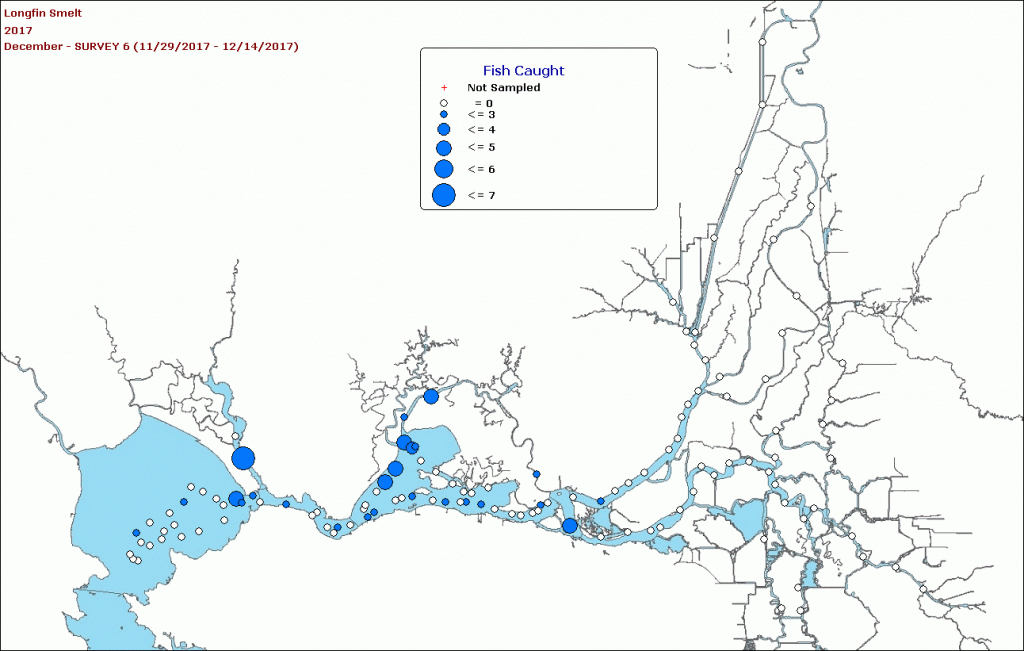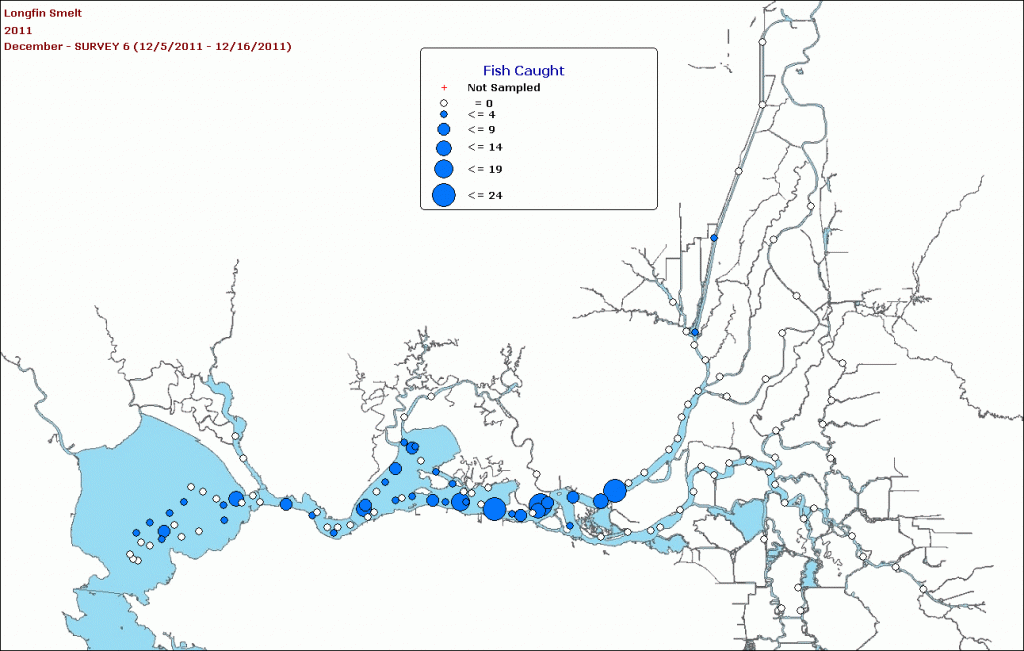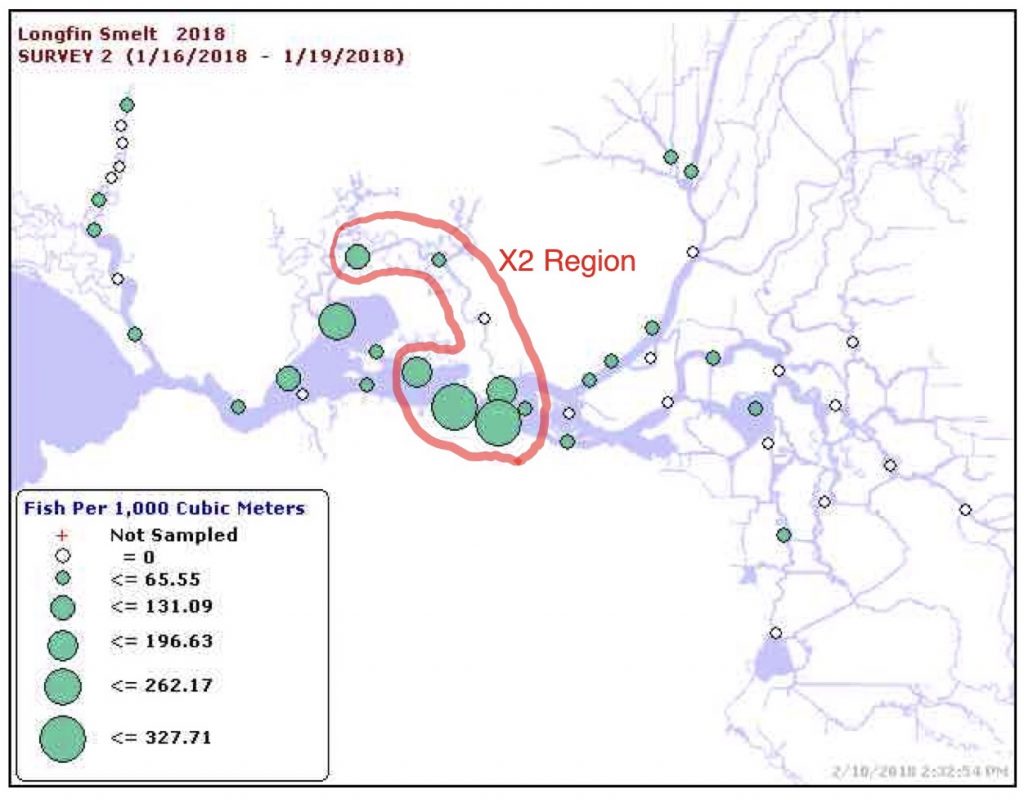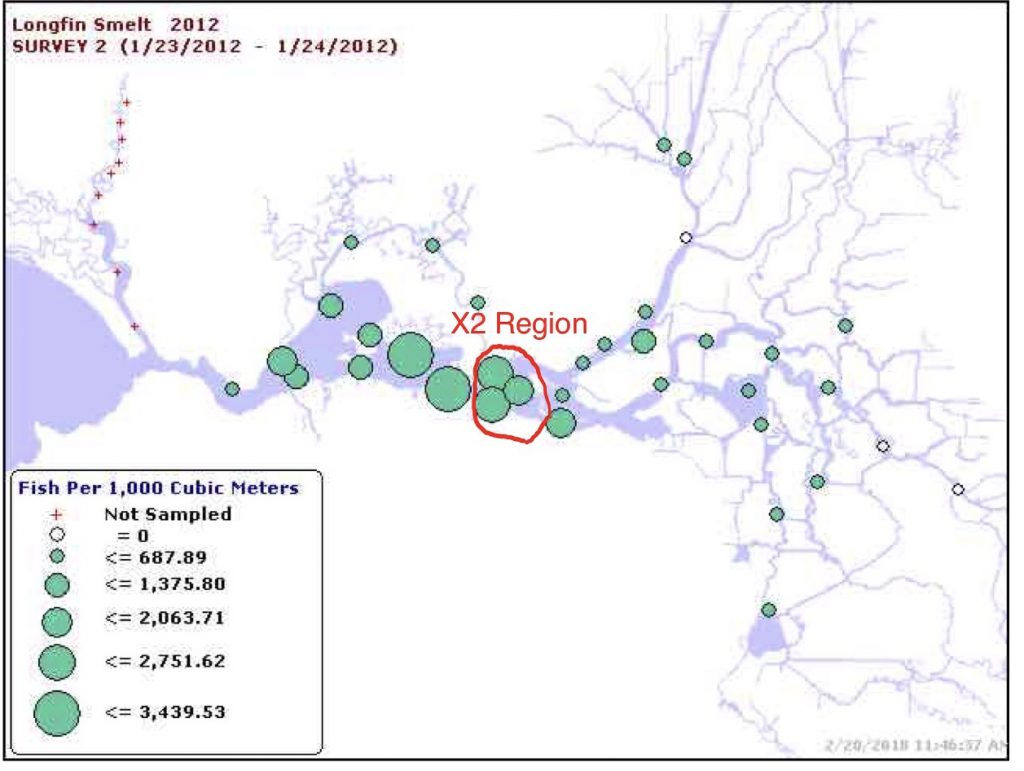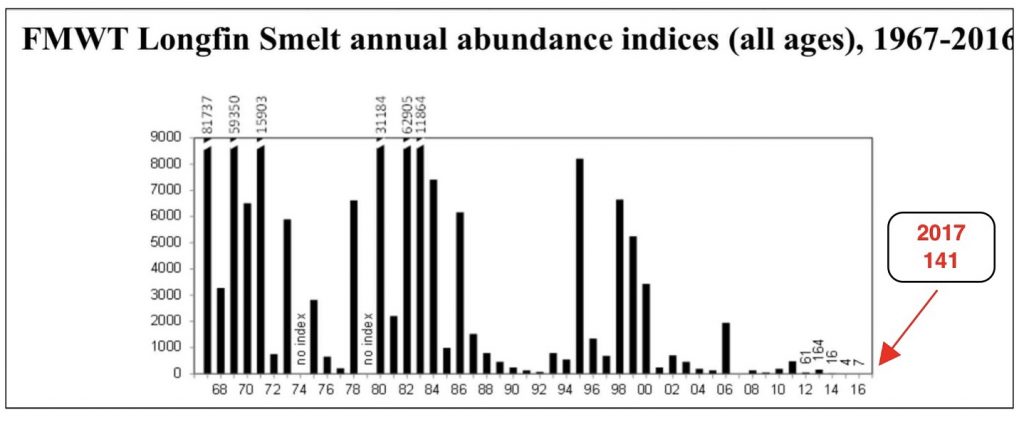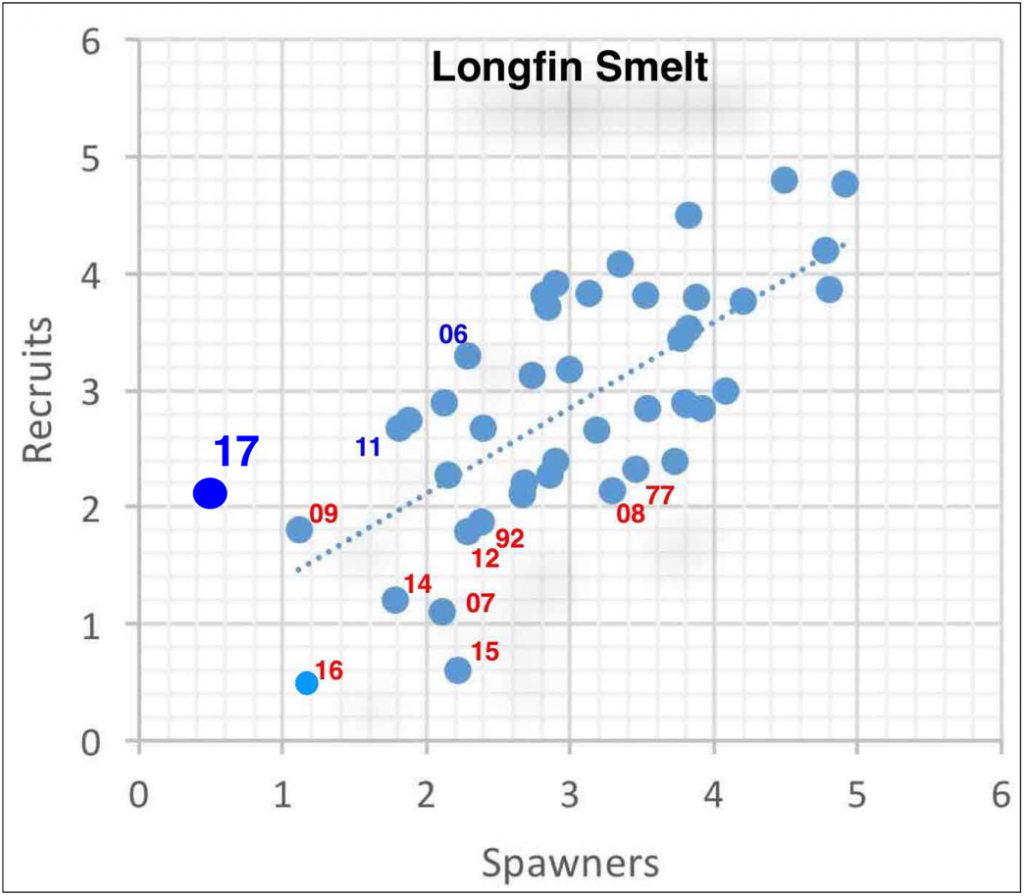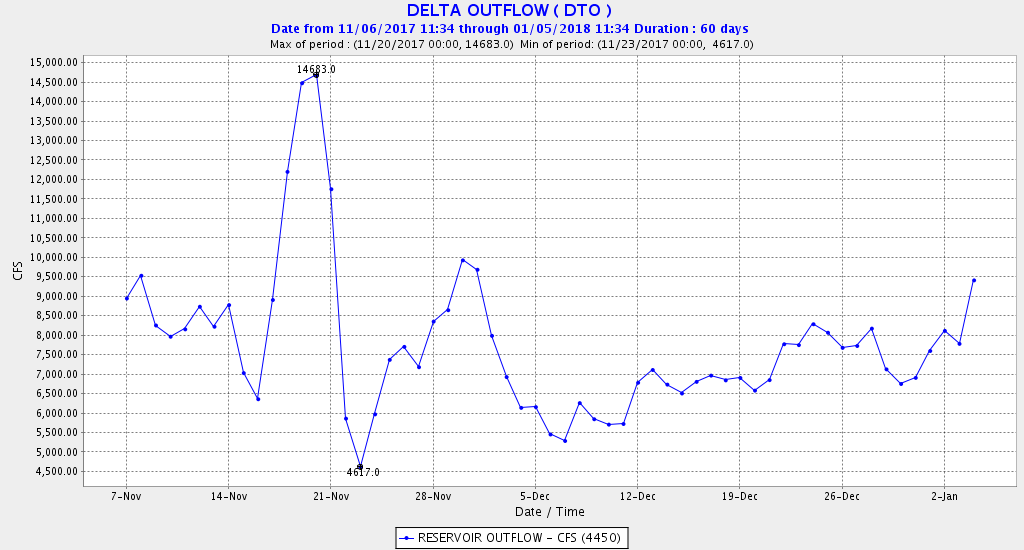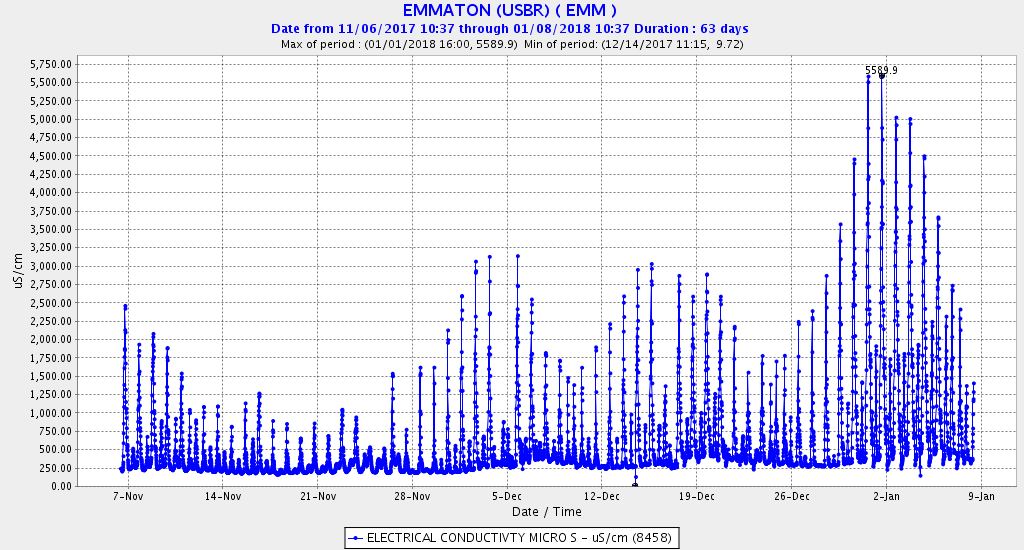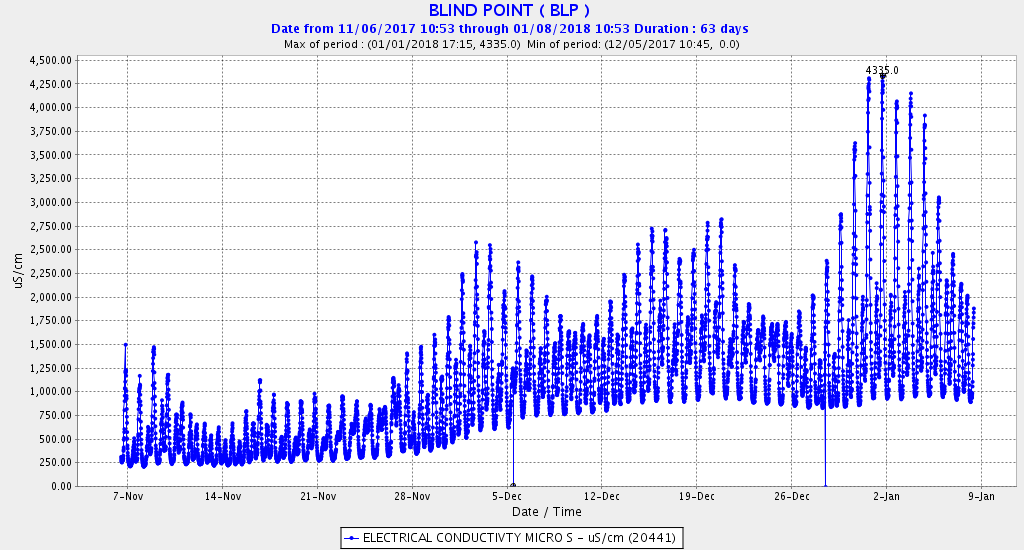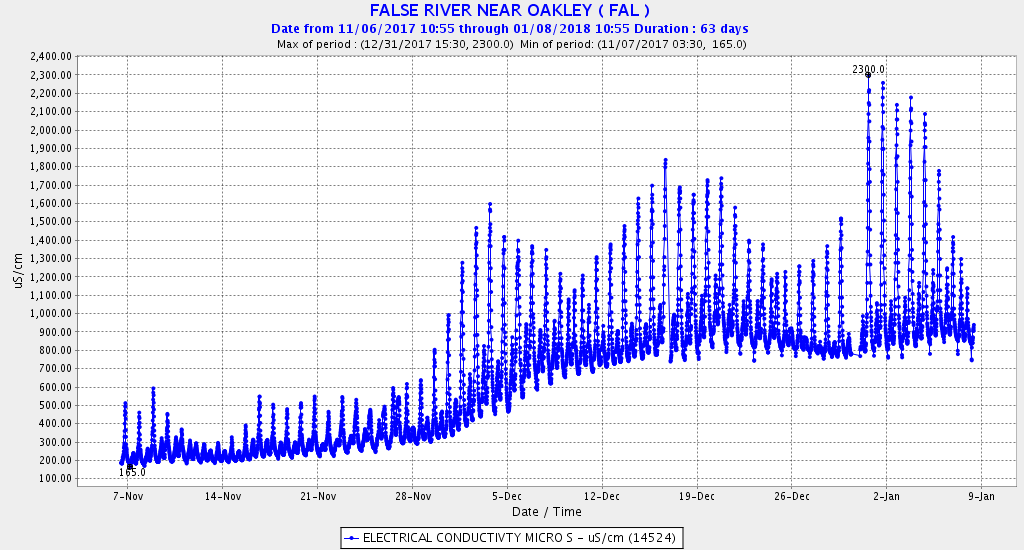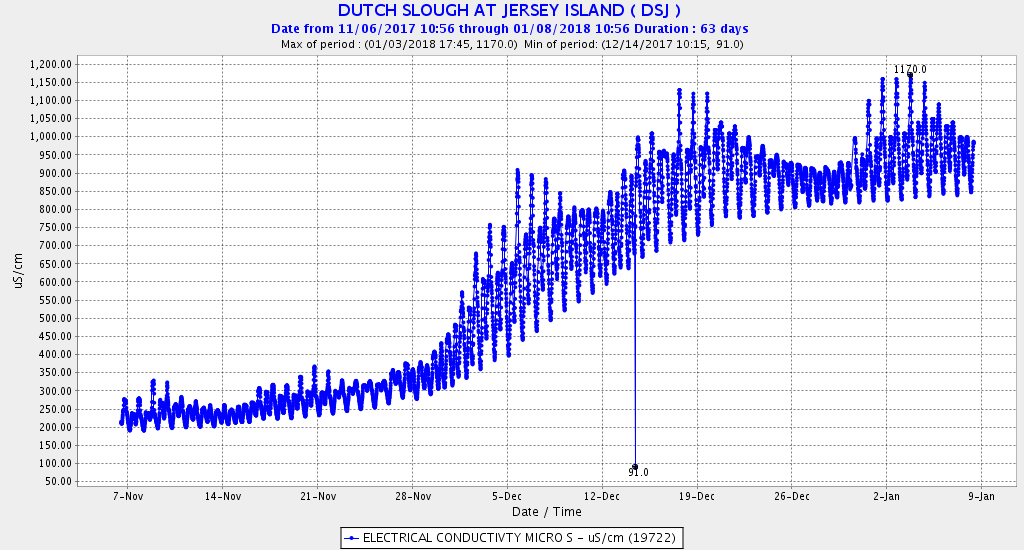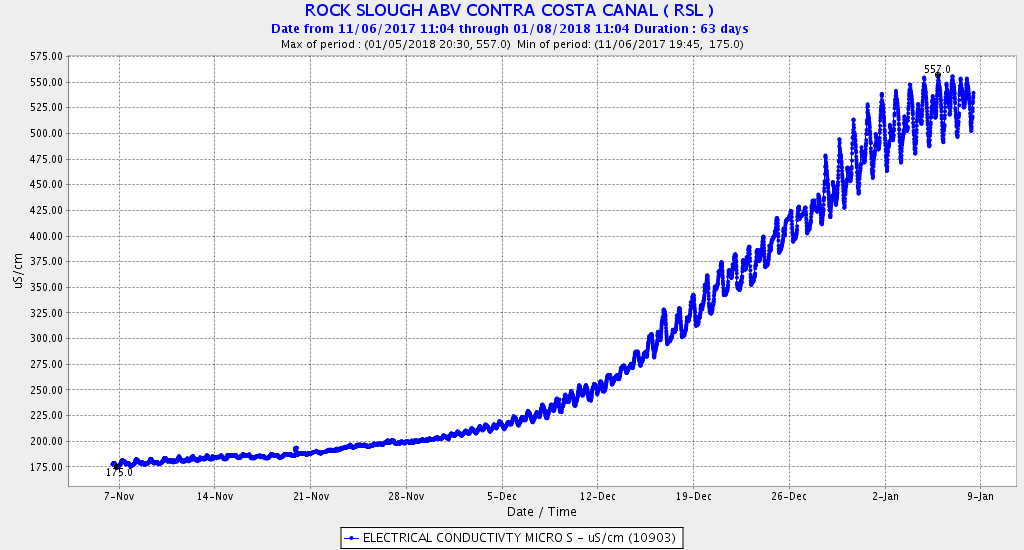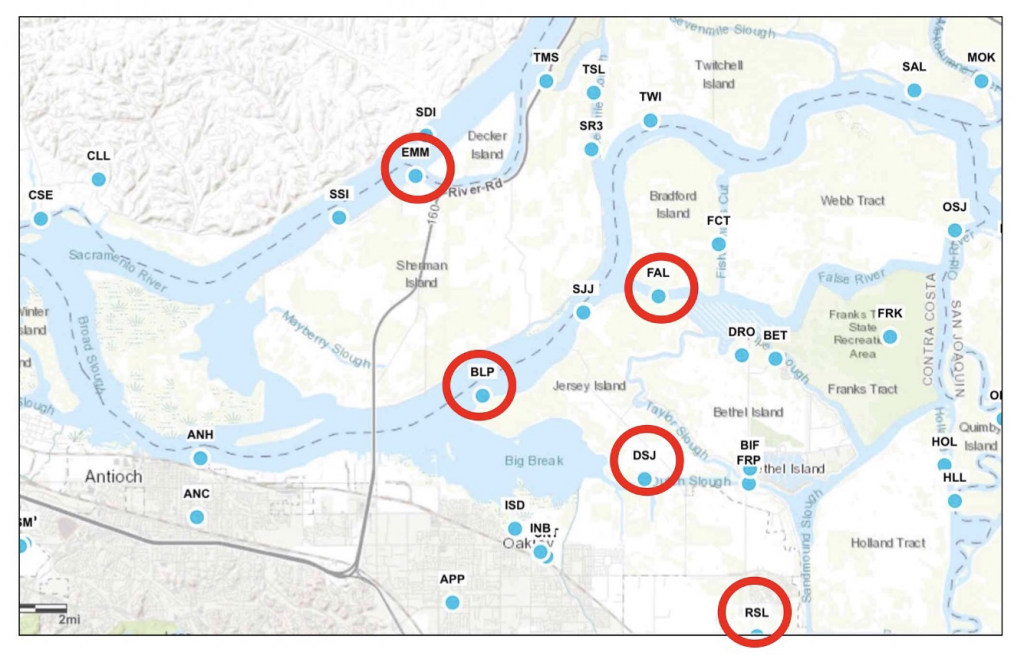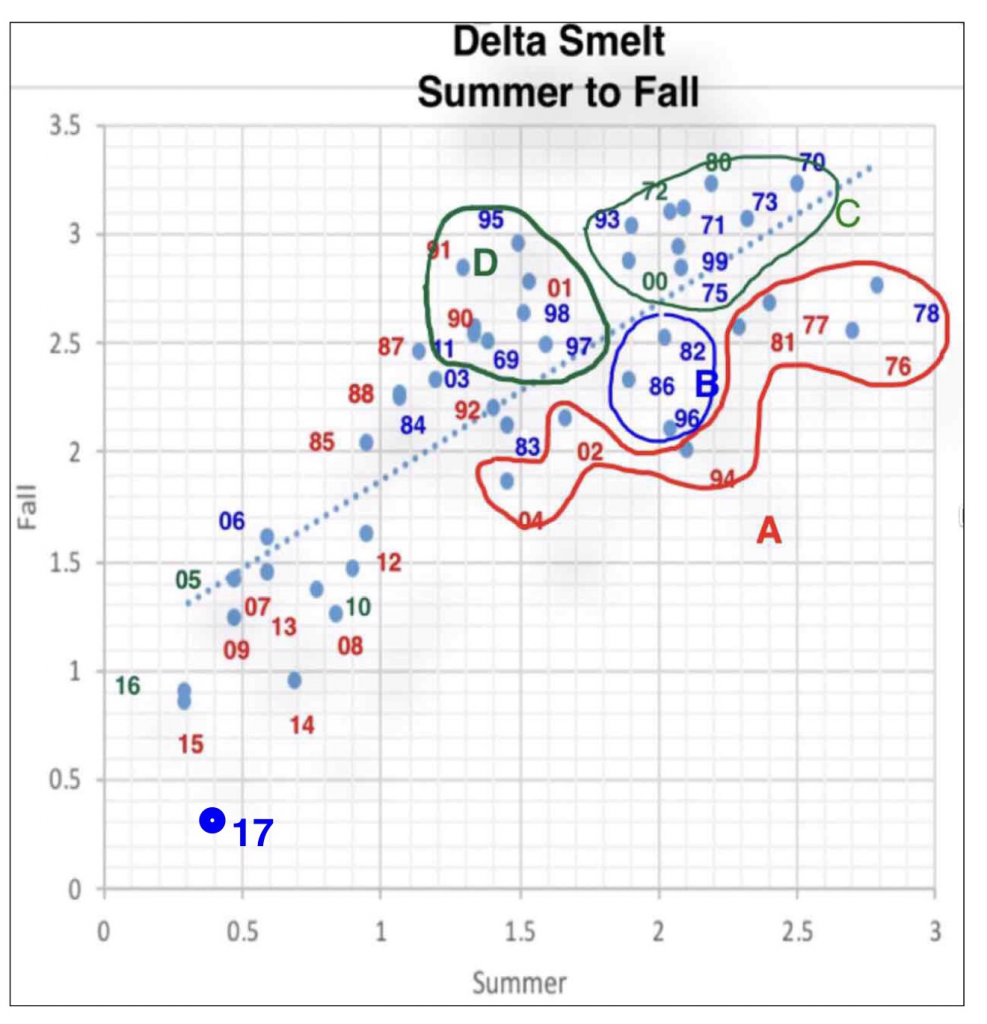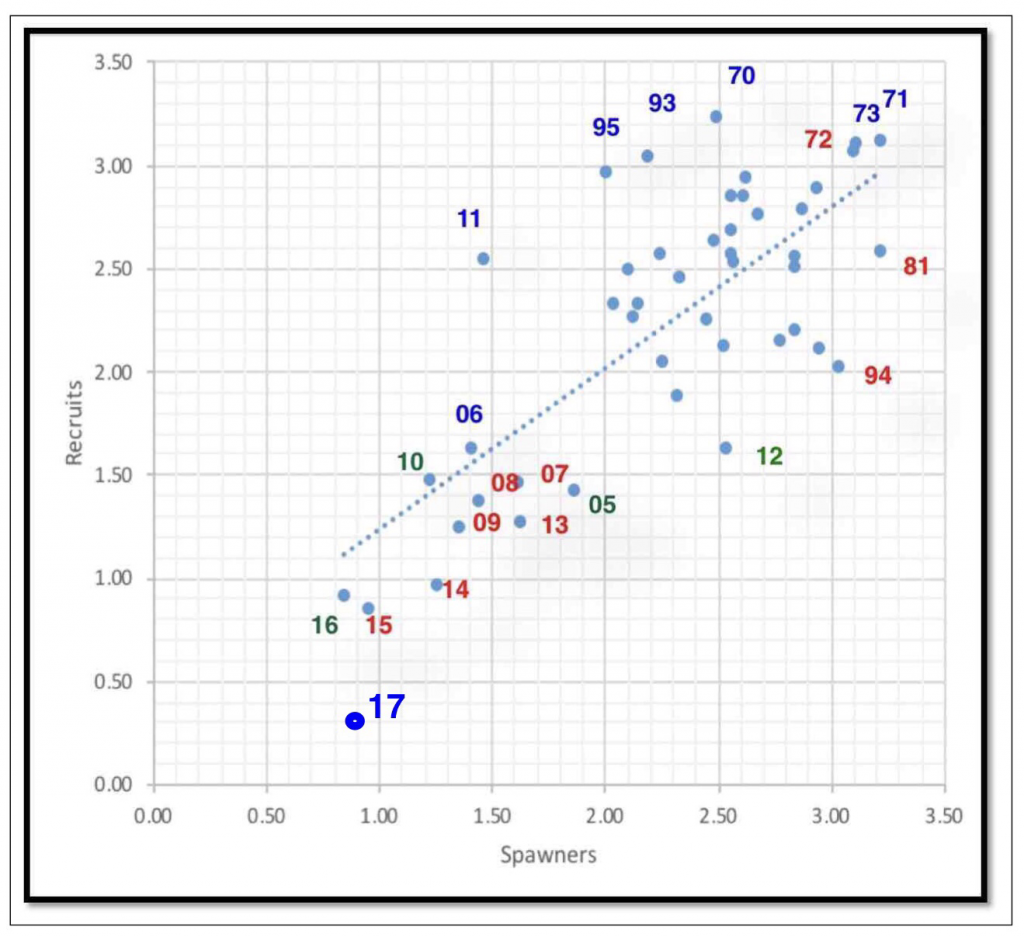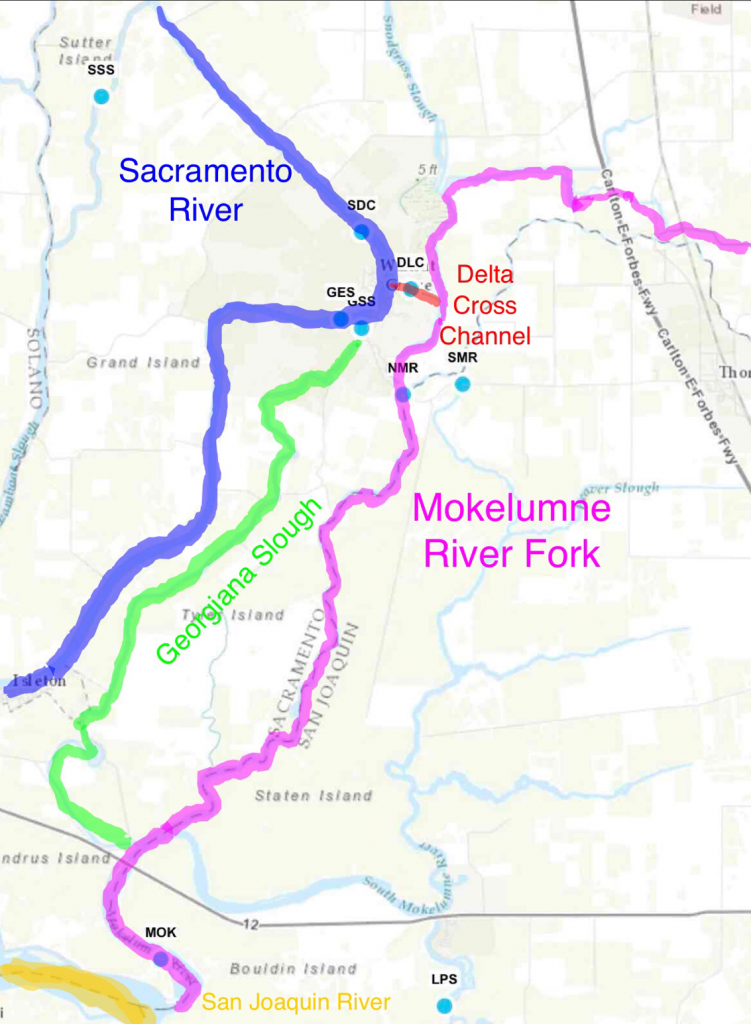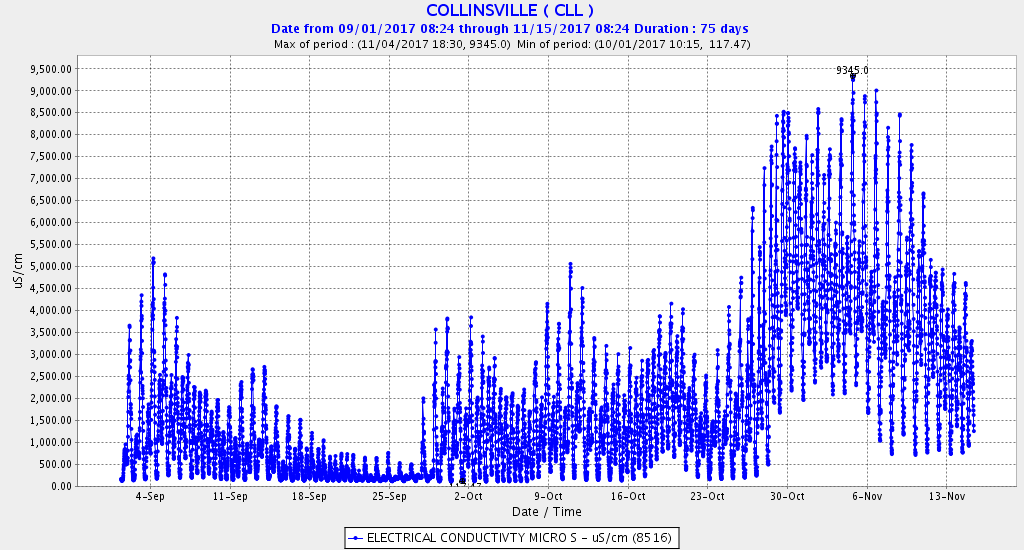The US Fish and Wildlife Service’s biological opinion (USFWS BO) on the proposed “California WaterFix” (Delta Twin-Tunnels Project or CWF) concludes that the CWF will not jeopardize protected Delta smelt in the Bay-Delta. In this post, I address the conclusions in the USFWS BO on the potential effects of WaterFix on Delta smelt. This is another post in a series of posts on the WaterFix.

BO conclusion, p. 252.
Comment: The north Delta diversions (NDD) will increase tidal flows and upstream reverse flows below the NDD intakes. Adult smelt will migrate further upstream on their spawning run on average than they can under existing conditions. Thus, their likelihood of spawning nearer the NDD is greater. There would be more smelt spawners diverted from the Cache Slough area to the Sacramento River upstream of Cache Slough. The only impediment to such upstream movement and to spawning upstream of the project area would be loss to impingement or predation at the NDD diversion intakes. These effects would be significant risks to the population.
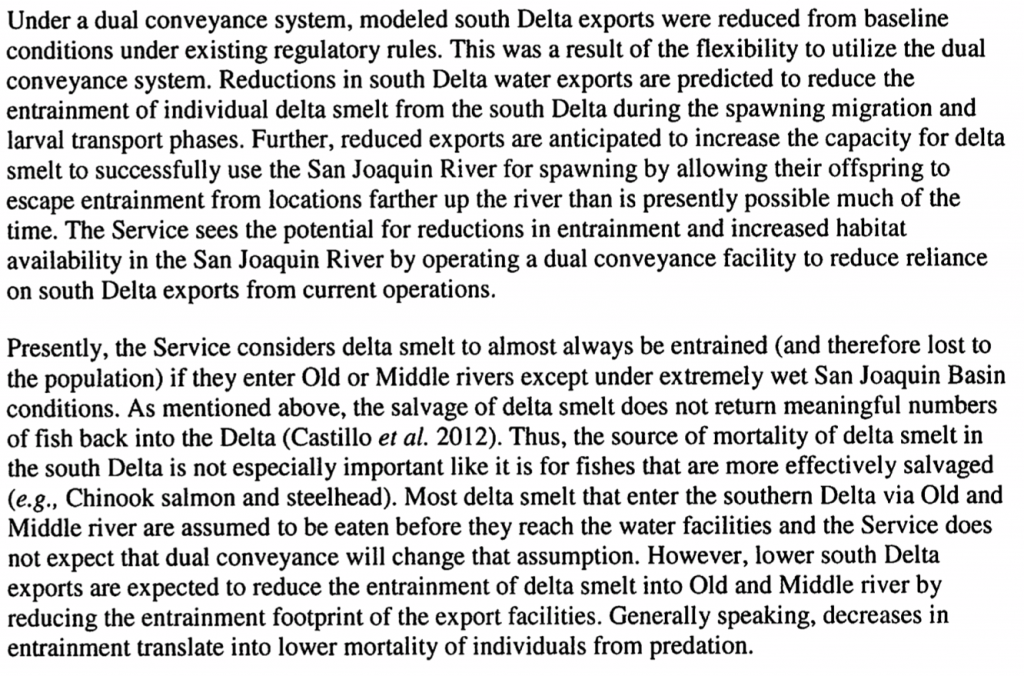
BO conclusion, p. 258.
Comment: These analyses did not take into account reduced freshwater inflow into the interior, central, western, and south Delta because of the diversions at the NDD intakes. South Delta exports would remain similar to existing constrained spring exports (~6,000 cfs) and high summer exports (no NDD exports). With less inflow to the lower Delta, the Low Salinity Zone in the lower Sacramento and San Joaquin channels would be expected to be further upstream, and entrainment potential from False River and lower Old River would be greater. Delta outflows would be lower, especially in drier years. Specified summer operations focused on south Delta exports would continue existing high summer risk to smelt and their habitat, especially if more spawning occurs in the lower San Joaquin River channel. Lower freshwater inflow will lead to higher salinities and warmer spring-summer Delta conditions, to the detriment of Delta smelt. Existing high summer impacts to Delta smelt would increase because of the more-upstream springtime distribution of smelt.

BO conclusion, p. 262.
Comment: The removal of a significant portion of freshwater inflow at the proposed NDD will not improve “transport flow function”. OMR effects will intensify with the LSZ further upstream in the lower San Joaquin River channel. The amount of smelt pulled through Three-Mile Slough and the amount transported tidally in the lower San Joaquin River from Antioch to Jersey Point via False River will increase. If OMR will not change in April-May, the primary smelt larval period, then larval impacts will be much worse without the fresh water diverted at the NDD.

BO conclusion, p. 262.
Comment: The 25oC restriction will come much earlier in spring without the freshwater inflow that is removed at the NDD. The change in LSZ position (more upstream) and water temperature (higher) will be generally detrimental to Delta smelt survival.

BO conclusion, p. 263.
Comment: Based on such past commitments and the performance of Reclamation and DWR, this one must also be taken with a grain of salt.” Without a clear understanding of factors affecting Delta smelt, as exemplified in this assessment, it is unlikely that the USFWS could protect Delta smelt under WaterFix operations.

BO conclusion, p. 272.
Comment: Water Year 2017 was the second year since the 2008 BO RPA on Fall Wet Year X2 came into play. In 2011, its application appeared to have positive effects. Yet in September 2017, the USFWS approved the provision’s removal. How are we to believe the commitment to employ the RPA in the future?

BO conclusion, p. 274.
Comment: The reduction of freshwater inflow to the Delta below the NDD will move the low salinity zone (LSZ) upstream and contract its size (volume and surface area). This will have serious adverse effects on smelt and their critical habitat.
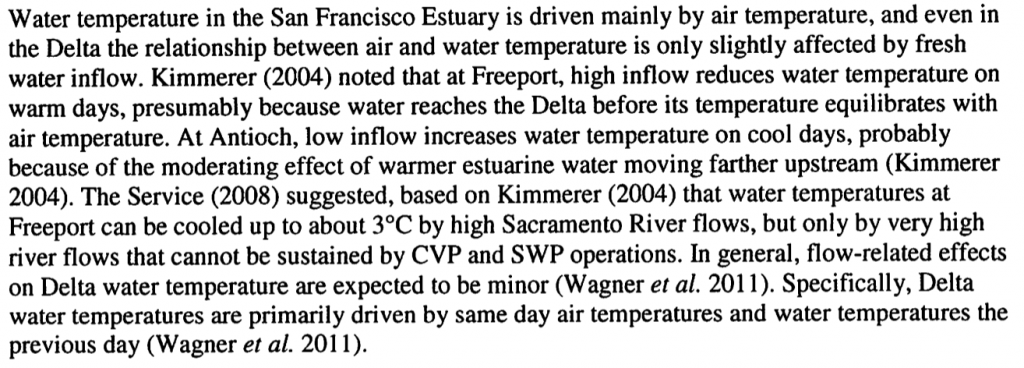
BO conclusion, p. 274.
Comment: Reduction of freshwater inflow into the Delta can increase Delta water temperatures several degrees, to the detriment of smelt survival. Not only are water temperatures increased by lower net flows, but the LSZ is warmer when it is located further upstream from the Bay and its cooler air temperatures.
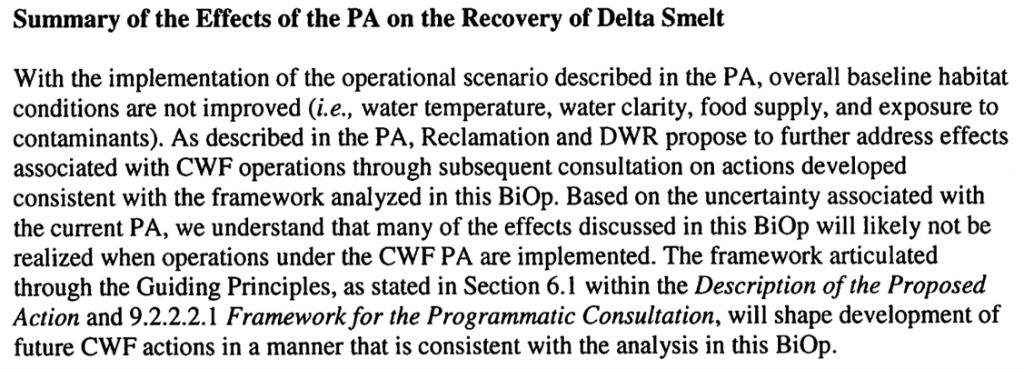
BO conclusion, p. 298.
Comment: Recognizing the uncertainty is no excuse for approving the proposed action (PA). There are no guarantees that predicted effects “will likely not be realized” or that future actions will protect smelt. It is more likely that recovery of Delta smelt will be further from reality with WaterFix.
